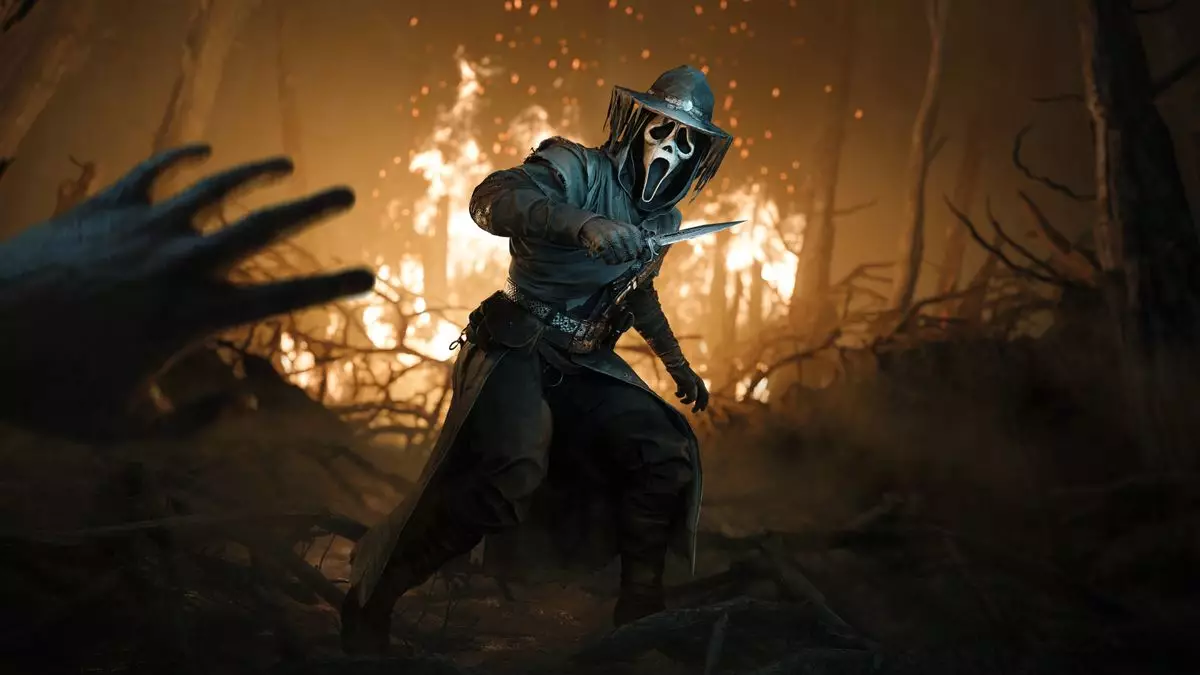Crytek’s multiplayer first-person shooter, Hunt: Showdown, is set against a historically rich backdrop that immerses players in an alternate reality of 1890s Colorado. This unique setting juxtaposes the real-world darkness of that era with supernatural elements, creating an engaging narrative for enthusiasts of the genre. However, the recent introduction of a DLC featuring the Ghostface character from the iconic Scream horror franchise has raised eyebrows among the community. As fans grapple with the unexpected merger of horror and historical gaming, the question arises: does this crossover enrich the experience or detract from the game’s authentic atmosphere?
The Scream films have made a significant mark on horror culture since their inception, entwining slasher mechanics with social commentary. In contrast, Hunt: Showdown thrives on tension, survival, and cooperative gameplay within its gothic world influenced by historical narratives. Thus, the challenge lies in navigating the dissonance that comes from integrating such disparate elements while maintaining player immersion.
The backlash from the gaming community was not unexpected. Many players found the concept of Ghostface, a modern horror icon, infiltrating the eerie streets of late 19th-century Colorado to be jarring, if not outright absurd. The concern transcended mere aesthetic choices, opening a wider debate about the integrity of Hunt’s narrative fabric. Critics worried: if Ghostface can roam freely in this universe, what precedent does it set for future collaborations? Would core game themes be diluted in favor of popular IP recognition?
Crytek’s subsequent response to this criticism, shared via a Twitter statement, attempted to reassure players while also validating the design choices made. Their assertion emphasized the intention to enhance the narrative rather than disrupt it, branding Ghostface as an “age-old mythological figure” that seamlessly fits the game’s darker tones. However, many perceived this reply as an evasion rather than a genuine engagement with player concerns. While the discussion of mythical qualities is intriguing, it can feel like a flimsy justification for a marketing strategy that might prioritize brand collaborations over well-established lore.
As players and critics sift through the complexities of this DLC, one must acknowledge the fine line that developers walk in the realm of gaming. The inclusivity of popular culture within video games can potentially draw in new audiences, offering fresh experiences through well-known characters and narratives. This strategy, however, may compromise the immersive experiences that dedicated players cherish.
Interestingly, some defenders of the Ghostface DLC claim it embodies a delightful divergence from typical gaming expectations, arguing that the primary goal of entertainment should trump lore continuity. Fans of the Scream franchise echo sentiments of nostalgia and fun, disrupting the often rigid formulas that govern traditional video game narratives. This perspective is not unfounded; after all, novelty and surprise can invigorate any gaming environment, keeping it dynamic and engaging.
The Future of Hunting in a Crossovers-Heavy Environment
The discourse surrounding the Ghostface Rampage DLC raises pertinent questions about the future landscape of gaming collaborations. Will more titles succumb to the lure of crossovers, potentially sacrificing depth for broad appeal? Or will developers find a harmonious balance that respects both their creations and the franchise themes at play?
As more games navigate this complex terrain, the stakes are heightened. Developers must listen attentively to their communities while remaining true to their creative visions. The challenge lies in crafting narratives that can comfortably integrate diverse characters without diminishing the core experiences upon which their titles were built.
Hunt: Showdown’s Ghostface DLC opens discussions on the consequences of genre-blending in gaming. Though some players might applaud the innovation alongside nostalgia, others fear potential narrative disruptions. Crytek’s choices signal a new chapter in their storytelling, one that introduces both opportunities and challenges. The road ahead will be crucial in determining how this balance will shape the trajectory of gaming narratives in the coming years.

